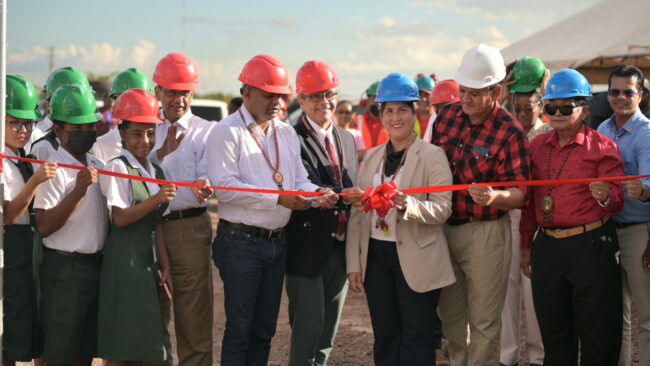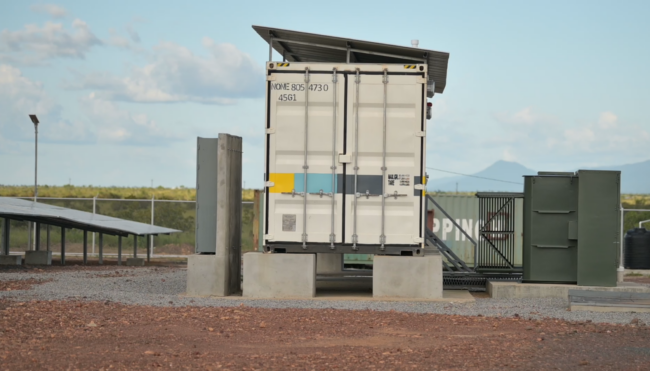$472M one megawatt solar farm commissioned at Lethem
Residents of Lethem, Region Nine, are now enjoying first hand reliable and clean energy, with the commissioning of a $472 million one (1.0) megawatt solar farm in the township on Friday.
Already 10,000 liters of diesel or some 63 drums of fuels were saved, since the solar power plant started testing on July 26.
Chief Executive Officer (CEO) of the Guyana Energy Agency, Dr. Mahender Sharma, said with the current fuel cost, the solar farm will save approximately $136 million annually.
In fact, Dr. Sharma stressed that this will allow the payback period for the project to be only three and a half years.
The high-powered solar system forms part of the PPP/C Government’s drive to resort to more renewable energy.

During the commissioning ceremony, Minister within the Ministry of Public Works, Deodat Indar, underscored that the aim is to ensure the entire region benefits from renewable energy in the future.
He believes that the project will significantly reduce the monthly electricity expense for the over 1,400 households across the town that are receiving service from the farm.
“I was told that the peak demand in the township on grid is about 1.1 megawatt, this commissioning with the solar energy given to you by God himself, will deliver one megawatt… its coming into your grid and powering your homes. So literally the town is running on renewable energy for about five hours if you get good sunlight,” Minister Indar noted.

According to the minister, residents there normally pay $80 for kilowatt, which is a higher rate than Georgetown. This is because the fuel comes from afar, and the transportation price normally takes up the energy cost.
He emphasised that with the historic undertaking no fuel will have to be utilised for at least five hours daily.“…that means the operating cost of the power company will go down, that means the money that we used to subside could go into infrastructural works and social goods…”
Additionally, another 2.2 megawatts of hydropower are also in the pipeline for Region Nine, 1.5 megawatts at Kumu, and the 0.7 megawatts in the Moco Moco Village.
Altogether the two projects will value about $2.8 billion.
Government is also advancing works at the hydropower plant at Kato, Region Eight. The 150-kilowatt power plant will cost $469 million.
“So, that is what we are doing. when we say to the world that we are pursuing renewable energy, the project are live projects and not on paper in someone’s office…its projects on the ground. Everywhere in the country you go they are projects on the ground,” the minister stressed.
“Twenty-eight communities we are putting mini grids systems. We already finished nine of them and 19 are being implemented now,” he added.

Meanwhile, the project was financed under a loan from the Inter-American Development Bank (IDB) back in November 2018.
IDB country representative (ag), Lorena Solorzano Salazar said the fund injected will not only support projects in Lethem, but other communities with approximately 3.5 megawatts of energy in total.
Further, she explained that the move is also linked to the IDB 2025 agenda, which supports member countries like Guyana with sustainable and technical assistance, and investment for energy, diversification and mitigating climate change. Also present at the historic event were Director General of the International Solar Alliance (ISA), Dr Ajay Mathur; Senior Minister in the Office of the Prime Minister of Barbados, Dr. William Duguid; and Chairman of the Lethem Power Company Board, Roger King, among others. [Extracted and modified from DPI]








Wonderful to see Guyana is embracing new energy technology to help with power generation using solar panels. Question is, what is the lifespan of the solar panels before they require change, because the photovoltaic cells that the panels are composed of will degrade with time and exposure? The future disposal of the used cells is another issue to take into consideration.